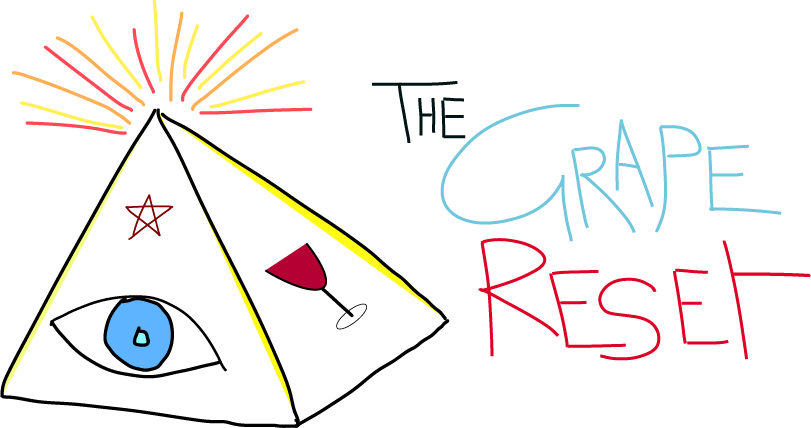Chloi Chatzivariti / Chatzivaritis Estate
Overview & Philosophy
Chatzivaritis Estate was founded by Vagelis Chatzivaritis and Olga in 1994, situated in Goumenissa, northern Greece.
The estate farms its vineyards organically from the start and has long prioritized environmental integrity and purity of expression.
Their daughter, Chloi Chatzivariti, returned to Greece around 2017 after studies and international experience, bringing renewed energy, experimentation, and a low-intervention philosophy.
Chloi drives forward the estate’s shift toward natural wine techniques, permaculture, minimal additions, and a deep engagement with site in every vintage.
Vineyards & Terroir
The estate encompasses approximately 20 hectares of organically cultivated vineyards, spread across parcels in Bindabla, Filyria, Plagia, Pentalofos, and Griva.
Soils are medium- to light-textured sandy-clay with variation: parcels include clay/sand near the winery and schist or gravel in higher altitude plots.
Elevations reach up to 700 meters above sea level in some parcels.
The climate is continental: cold, wet winters; hot, dry summers; and cool nights in the growing season, aiding in acid retention and aromatic persistence.
Cultivated grape varieties include: Xinomavro, Negoska, Roditis, Malagouzia, Muscat, and Assyrtiko, along with small holdings of Sauvignon Blanc, Merlot, Chardonnay, and Cabernet Sauvignon.
The vineyards are tended by hand, with close parcel-by-parcel observation, selective harvesting, and careful canopy management (increasingly minimal trimming, allowing more natural structure) to preserve physiological balance and protect acidity.
Chloi’s Winemaking Style & Techniques
Chloi employs minimal intervention in the cellar, letting the vineyard speak through the wines.
Fermentation uses indigenous / wild yeasts exclusively — no inoculations.
No fining or filtration is practiced; wines are bottled raw or with minimal adjustment.
Sulfur additions are minimal and only when required, generally kept well below standard levels (e.g. ≤ ~30 mg/L in many wines).
Whites often see cold maceration (2–4 days) before fermentation, sometimes in stainless steel or amphora.
Reds may employ carbonic maceration (especially Negoska) or more traditional maceration, with whole clusters in some cases, to enhance aromatic brightness and purity.
Some wines are aged 3–7 months in used French oak barrels; others are kept in stainless steel or amphora depending on the cuvée.
Chloi works parcel by parcel: grapes are hand-sorted, often over long sorting periods, to isolate the best fruit and understand each vineyard’s expression.
Experimentation in petillant naturel (pét-nat), amphora wines, and natural styles (orange, skin-contact) is part of the current program and growing portfolio.
Wine Portfolio & Signature Expressions
Goumenissa PDO — A red blend respecting the local requirement: typically 70% Xinomavro + 30% Negoska, aged in old French oak (around 15 months), followed by bottle aging.
Mosaic Red / Mosaic White — Multi-varietal blends expressing site and vintage in lighter or fresher styles.
Chloë Rosé — Blend of Xinomavro and Negoska, tank fermented, minimal intervention.
MiNiMus Series — A series of experimental, natural wines under labels such as Mi (100% Assyrtiko), Ni (orange blend of Assyrtiko & Roditis), and Mus (100% Xinomavro).
Negoska Carbonic — 100% Negoska vinified via carbonic maceration, whole-cluster technique, spontaneous fermentation, no fining, no filtration.
Pet-Nat / Sparkling Variants — Wines created in pét-nat style from varieties like Muscat, Malagouzia, or blends with Xinomavro/Negoska, bottled before fermentation finishes to capture natural fizz.
Some whites and orange wines explore skin contact, extended maceration, or amphora aging to express texture, depth, and phenolic complexity.
-
🛒 Retailers / Distributors / Export Partners & Shops (with live links)
Distributors listed by Chatzivaritis:
• Greece: Trinity Wines; Tanini agapi mou; Mycava; Moby Dick or the Whale; Oinognosia; Κoutsoupias; Vinamorato; Telis Goidas; WINE CAVA OINOXOROS; Ragousis chatzivaritis.gr
• UK: H2Vin & Alliance chatzivaritis.gr
• Germany: Ritual Wines chatzivaritis.gr+1
• France: Yo Wines chatzivaritis.gr
• Cyprus: Volta / Vassos Eliades chatzivaritis.gr
• USA: Wine4theworld chatzivaritis.gr+1
• Canada: Les vins du Moine / Genu Wine Imports chatzivaritis.gr
• Singapore: Achinos Asia chatzivaritis.gr
• Taiwan: Fine Taste Corporation chatzivaritis.gr
• Australia: Cosmic Wines chatzivaritis.gr
• Switzerland: Reb Wein chatzivaritis.gr
Retail / shop listings / importers:
• Wine Origins (UK) — “Buy Chatzivaritis Wine Online” page wineorigins.co.uk
• CMK-IT Selections — profile page for Chatzivaritis Estate CMK-IT Selections
• Alliance Wine — listing of Chatzivaritis “VꓤƐ Varietal Wine” alliancewine.com
• Thorne Wines (UK) — “Domaine Chatzivaritis” brand page Thorne Wines Limited
• HAY Wines (UK) — listing Domaine Chatzivaritis Migma PetNat White 2022 -
🏠 Address / Contact
Chatzivaritis Estate
Goumenissa, Central Macedonia, Greece
Website: chatzivaritis.gr
“Distributors” / contact page: chatzivaritis.gr

